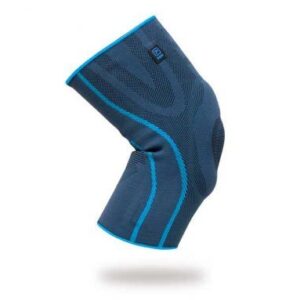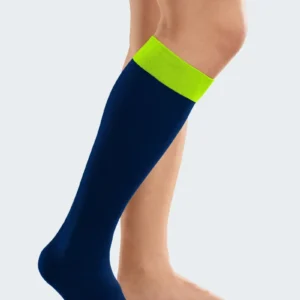Patellofemoral syndrome
Patellofemoral syndrome caracterised by pain in the anterior region of the knee, around the small bone in the knee, the patella. It is one of the most common causes of knee pain among young athletes, especially in sports that involve a lot of running or jumping. It can start gradually, for example due to an imbalance of the muscles in the thigh area, or result from a single incident, either in response to a sudden increase in training intensity with excessive use of the thigh muscles, or a traumatic event that causes misalignment of the kneecap, for example.
Most common knee pathologies
Symptoms
Pain in the front of the knee, around the kneecap area. The pain can be more intense when running, going up and down stairs or even when sitting and squatting, i.e. all activities that involve bending the knee.
Risk Factors
Sports that involve running and jumping, with repeated impact on the kneecap region when the legs meet the ground, such as runners and marathon runners, cyclists, basketball players, among others; anatomical misalignment of the kneecap in relation to the femur (thigh bone); muscle weakness of the thigh with less flexibility and joint stability of the knee; inadequate or excessive training; previous knee injuries; excess weight; women with an incidence of around 2x that of men; adults and young teenagers.
Protective Factors
Proper sports footwear and posture; Strengthening the thigh muscles; Good general physical condition which includes maintaining a healthy weight; Avoiding intense training and repetitive exercises.
Treatment
Rest is recommended, avoiding activities that involve running, jumping or bending the knee deeply, or when this is difficult, alternating periods of low and high intensity exercise. Applying ice to the painful area of the knee is recommended, and oral analgesic medication may be necessary if the pain is severe. There is also an indication to use a knee brace to support the kneecap, which can be used during daily activity, when walking or to provide more support during physical exercise (there are different models, depending on the individual's goals and circumstances). At the same time, you should start a plan to strengthen the leg muscles (favouring the Oblique Medial Vastus muscle), and/or correct the misalignment of the kneecap, which in severe cases may require surgery.
Information: All the information contained here is merely a summary for a general understanding of the pathologies, highlighting their definition, symptoms, risk factors, protective measures and treatment options.
Consulting a specialised health professional is essential for an accurate diagnosis and an effective treatment plan.
Support and protection for patellofemoral syndrome
Discover all the orthotics for Patellofemoral Syndrome
-
Seleccione Opções This product has multiple variants. The options may be chosen on the product page
-
Seleccione Opções This product has multiple variants. The options may be chosen on the product page
Genumedi Simple Elastic Knee Brace for Centring the Rotula
40,70 €Avaliado 0 out of 5( 0 comentários ) -
Seleccione Opções This product has multiple variants. The options may be chosen on the product page
Genumedi PA Elasticated Knee Support for Goose Foot Tendonitis Pain Relief
61,05 €Avaliado 0 out of 5( 0 comentários ) -
Seleccione Opções This product has multiple variants. The options may be chosen on the product page
-
Seleccione Opções This product has multiple variants. The options may be chosen on the product page
Genumedi PSS Elastic Knee Brace for Centralisation and Rotator Support
67,90 €Avaliado 0 out of 5( 0 comentários ) -
Seleccione Opções This product has multiple variants. The options may be chosen on the product page
Genumedi PT Elasticated Knee Brace for Traction of the Rotator Cuff
57,00 €Avaliado 0 out of 5( 0 comentários ) -
Seleccione Opções This product has multiple variants. The options may be chosen on the product page
-
Seleccione Opções This product has multiple variants. The options may be chosen on the product page
-
Seleccione Opções This product has multiple variants. The options may be chosen on the product page
-
Seleccione Opções This product has multiple variants. The options may be chosen on the product page
-
Seleccione Opções This product has multiple variants. The options may be chosen on the product page
-
Seleccione Opções This product has multiple variants. The options may be chosen on the product page
-
Seleccione Opções This product has multiple variants. The options may be chosen on the product page
Protect.Co Knee Brace with Flexion and Extension Adjustment
258,00 €Avaliado 0 out of 5( 0 comentários ) -
Seleccione Opções This product has multiple variants. The options may be chosen on the product page














